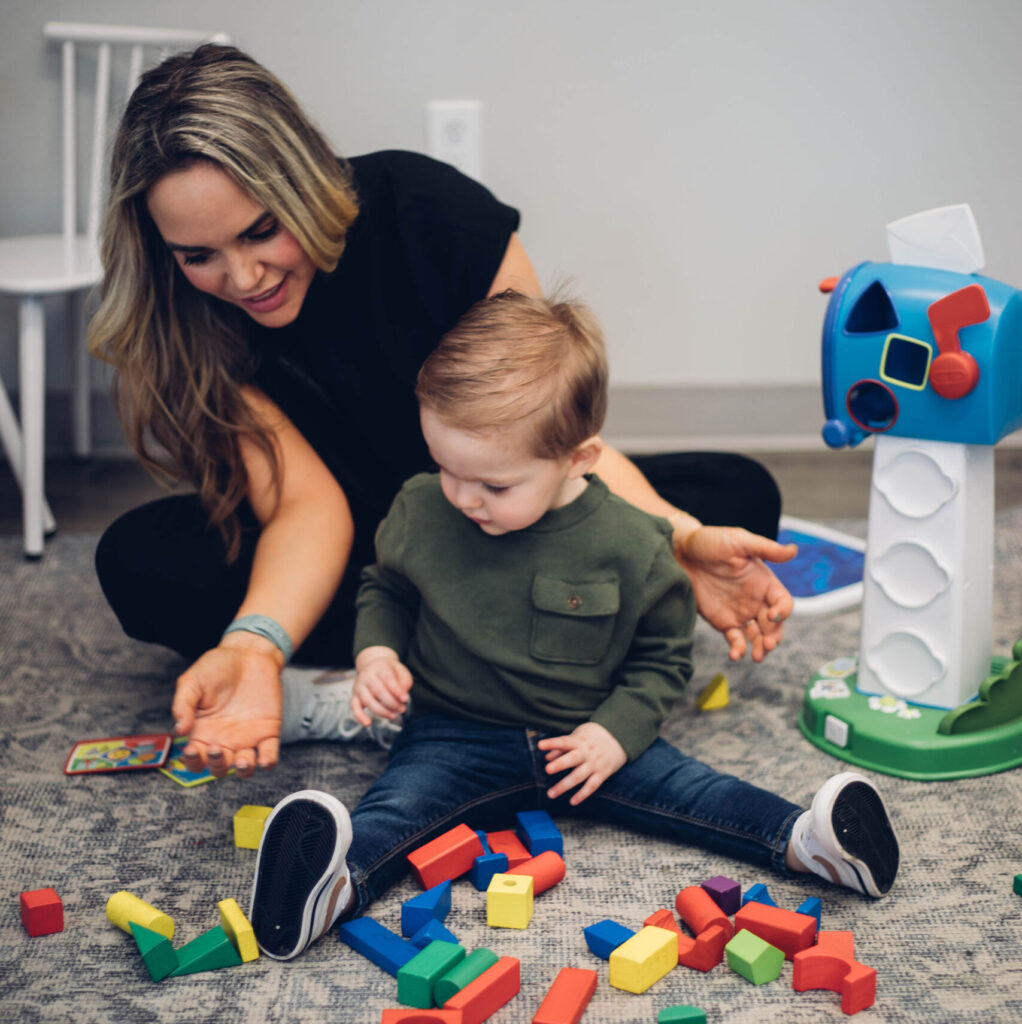I want to talk to you a little bit about pediatric occupational therapy (OT). Most people tend to hear “occupational therapy” and think it has something to do with your occupation, or your job. And their next logical thought is usually, “But my child doesn’t have a job!”
When we talk about occupations in pediatric therapy, we mean the daily activities that children do. It could be playing with toys, getting dressed, tying their shoes, interacting with friends, or any number of things your child does during their day.
Why Is Occupational Therapy Important?
OT is a way to help your child improve their motor skills, social development, and ability to play or take care of themselves. These goals are achieved through different activities (or occupations).
If your child is struggling with their occupational skills, you’ll notice it because they have trouble with daily activities such as:
- Writing
- Tying their shoes
- Getting dressed
- Balancing
- Paying attention
- Making friends
- Moving their body
Fine motor skills, especially, are needed for play and school. If your child has trouble with writing, they won’t be able to get their work done, and it can negatively impact their learning. Or if they’re trying to play games with other kids, it can be very frustrating for your child if they have a hard time getting clothes on a doll, or catching a ball.
How Does Occupational Therapy Work?
We want children to enjoy visiting us for their OT sessions, which is why we make our activities fun and playful. If you were to peek in on an OT session, you might just think the therapist was playing with your child. What you’ll notice over time, though, is just how much your child is learning from the games and activities that we do with them. Some of these activities may be:
- Obstacle courses
- Simon Says
- Puzzles
- Tactile play (with sand, beans, water, etc.)
- Scavenger hunts
- Playing pretend
- Practicing skills like shoe tying
Our therapists pick specific, proven activities to address your child’s needs and goals. We’re not just playing with your child randomly—there are specific things we’re looking for in these activities. How well can they follow directions? How’s their balance? Are they coordinated? Can they handle things with their hands? And as we go through these sessions, we’ll adjust the activities to really target what your child needs and wants to improve on.
Is Occupational Therapy Only for Older Children?
OT is not limited to older children at all. Even babies and toddlers can benefit from OT sessions. While babies may not seem like they do very much, they’re actually growing and learning just as much as older children. OT can help babies get better at tracking motion and sounds, move their heads, roll over, crawl, and improve their hand-eye coordination.
Toddlers are also learning and growing every day. OT can help your toddler walk, balance, play, and interact with the world around them. No matter how old or young your child is, OT can help them improve their skills and gain the confidence they need to handle life.
How Our Clinic Is Set Up to Provide Occupational Therapy
Our space is ideal for OT because it is open and inviting. Our children love coming to our clinic because we have so many fun and safe activity areas set up for them where they can practice their skills.
If your child is struggling with things like motor skills, social skills, sensory processing, development, or attention, give us a call to schedule a free phone screening. Our team will help you understand what the sources of your child’s difficulties are and how we can address them with occupational therapy.
Call us at (318) 746-1199 today for a free phone screening!

